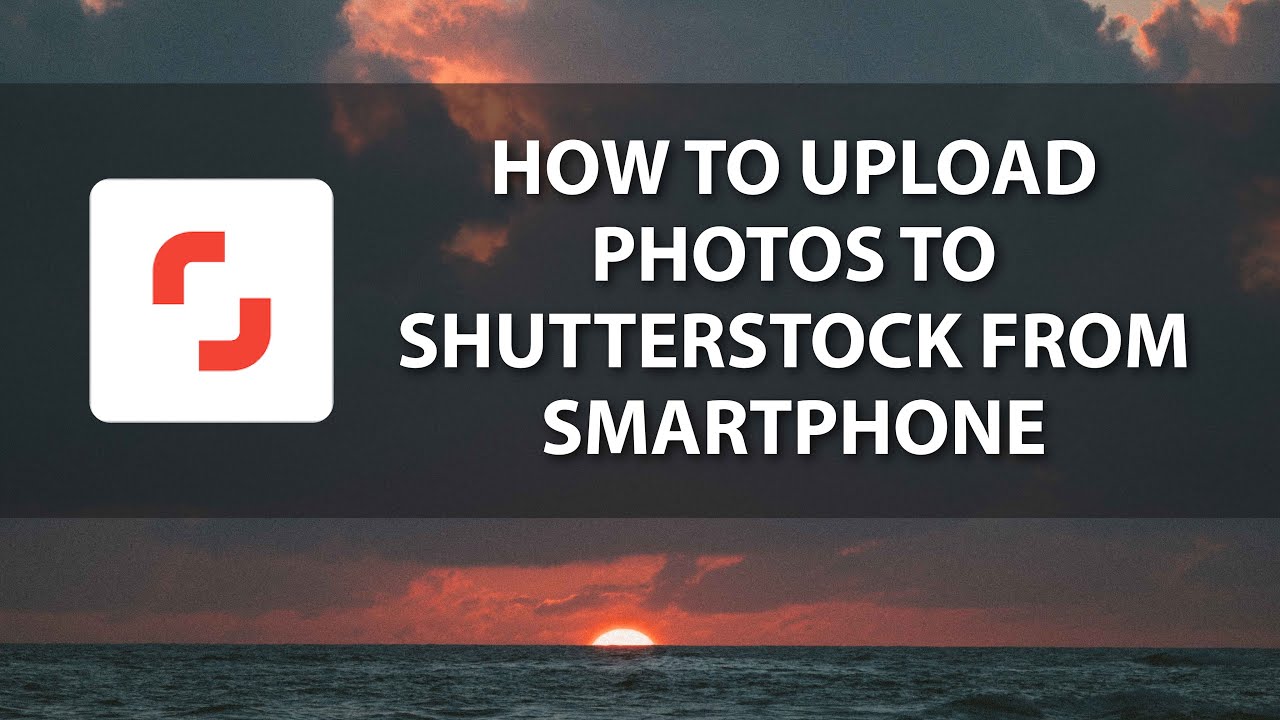Thinking about turning your photography passion into a source of income? Shutterstock is a popular platform where you can sell your images to a global audience. Uploading your images might seem straightforward, but a few key steps can make a big difference in how quickly your photos get approved and start generating sales. In this guide, we’ll walk through the essentials of uploading images to Shutterstock, ensuring your submissions are polished, compliant, and ready to attract buyers. Let’s get your images online and start earning!
Preparing Your Images for Submission
Before you hit the upload button, it’s crucial to prepare your images properly. First impressions matter, especially when it comes to stock photography. Here are some tips to make sure your images meet Shutterstock’s standards and appeal to buyers:
- Check the Resolution and Size: Shutterstock recommends images to be at least 4 megapixels (e.g., 2480×3508 pixels for a standard print size). Higher-resolution images look more professional and versatile for buyers.
- Use High-Quality Files: Save your images in JPEG format with a minimum of 8-bit color depth. Avoid compression artifacts by exporting at the highest quality setting.
- Ensure Proper Exposure and Focus: Sharpen your images if needed, and make sure they are well-lit, correctly exposed, and in focus. Blurry or poorly lit photos won’t make the cut.
- Color Correction and Editing: Adjust brightness, contrast, and color balance as needed. Avoid over-editing—your images should look natural and appealing.
- Remove Watermarks and Logos: Ensure your images are free of any watermarks, logos, or branding that aren’t part of the final shot.
Next, consider the content of your images. Shutterstock prefers authentic, original content with commercial appeal. Avoid heavily copyrighted material or recognizable trademarks unless you have model or property releases. Properly prepared images not only increase your chances of approval but also attract more buyers due to their quality and relevance.
Creating an Account and Setting Up Your Contributor Profile
Getting started with Shutterstock is pretty straightforward, but taking the time to set up your account and profile properly can make a big difference in your success as a contributor. First things first, visit the Shutterstock contributor portal and click on the “Sign Up” button. You’ll need to provide some basic info like your name, email address, and create a strong password. Once you’ve signed up, you’ll need to verify your email, so check your inbox and click the verification link.
After your email is verified, it’s time to set up your contributor profile. This is your chance to make a good first impression on potential buyers. Head over to your dashboard and click on the profile section. Here, you can upload a professional-looking profile picture—preferably a headshot that’s clear and friendly. Fill out your profile details honestly and thoroughly: include your location, your areas of expertise, and a short bio that highlights your skills and style as a photographer or artist.
To help potential clients find your work, you should also add relevant keywords and tags to your profile. Think about the themes or subjects you excel in, such as “nature,” “technology,” or “business,” and include those. The more complete and optimized your profile is, the more likely your images will get discovered.
Another important step is linking your payment information. Shutterstock offers various payout options like PayPal, Skrill, or bank transfers. Make sure to fill out your payment details accurately so you can receive your earnings without any hiccups. Also, review the contributor agreement carefully to understand Shutterstock’s policies and your rights.
Remember, your profile isn’t just about uploading images—it’s about building your brand and credibility. Take some time to browse other successful contributors’ profiles for inspiration, and don’t forget to keep your profile updated as you create new work or improve your portfolio. The more professional and complete your profile looks, the faster you’ll attract buyers and make those quick sales happen!
Uploading Images to Shutterstock Step by Step
Now that your account is set up and your profile is polished, it’s time to start uploading your images. Shutterstock makes this process pretty simple, but a few tips can help you upload efficiently and optimize your images for sales.
First, log into your contributor dashboard. You’ll see an “Upload” button prominently displayed—click on it to begin. Shutterstock allows you to upload multiple files at once, so if you have a batch of photos, you can select several images to upload simultaneously, saving you time.
Before uploading, make sure your images meet Shutterstock’s technical requirements:
- File format: JPEG for photos and PNG for vectors.
- Minimum resolution: 4 megapixels (generally at least 3000 x 2000 pixels).
- Color profile: sRGB or Adobe RGB.
- File size: Keep it under 50MB for faster uploads.
Once you’ve selected your images, you’ll be guided through the upload process. For each image, you’ll need to add:
- Title: Be descriptive and specific. For example, “Sunset over Mountain Lake.”
- Categories: Choose relevant categories so buyers can find your images easily.
- Keywords: Add at least 20-30 relevant keywords. Think about what someone searching for this image might use—include things like colors, emotions, locations, and themes.
- Description (optional): A brief caption or explanation can help with discoverability.
After filling out this info, double-check your images for quality—blurry, poorly lit, or low-resolution photos are less likely to sell. Shutterstock also offers a quick preview and validation step where you can review your uploads before final submission.
Once everything looks good, click “Submit for Review.” Shutterstock’s review team will then check your images for quality and adherence to guidelines, which usually takes a day or two. If approved, your images will be published and available for purchase.
Pro tip: Keep uploading consistently. The more high-quality images you add, the higher your chances of making quick sales. Also, pay attention to trending themes and seasonal topics—timely images often sell faster. And don’t forget to monitor your dashboard for sales and feedback, so you can refine your strategy over time.
Optimizing Image Titles, Descriptions, and Tags for Better Visibility
Once you’ve uploaded your images to Shutterstock, the next big step is making sure they get noticed. Think of your titles, descriptions, and tags as the GPS coordinates for your photos—they help buyers find what they’re looking for quickly and easily. The goal here is to be clear, descriptive, and strategic without overdoing it.
Start with a compelling and accurate title. Your title should be straightforward yet descriptive enough to capture the essence of the image. For example, instead of “Beautiful Scene,” go for “Sunset over Mountain Lake with Reflection.” This gives a potential buyer a quick snapshot of what to expect.
Next, craft a detailed description. This is your chance to provide context and include relevant keywords naturally. Instead of stuffing keywords, focus on what makes your image unique and useful. Mention the location, mood, colors, or subjects. For example, “This serene image captures a vibrant sunset reflected on a calm mountain lake, perfect for travel blogs or outdoor adventure websites.”
And then, the tags—these are the keywords that help your image appear in search results. Use a mix of broad and specific tags. Think about what a buyer might search for. For example:
- Sunset
- Mountain lake
- Reflection
- Nature
- Outdoor
- Travel
- Scenic
Tip: Use all available tag slots and include synonyms or related terms. Don’t just repeat the same word—think of different ways people might search for the same subject.
Remember, the key is to be honest and accurate. Misleading titles or tags not only frustrate buyers but can also hurt your reputation on Shutterstock. So, take your time to optimize each image thoughtfully. When done right, your images will have a much better chance of appearing in relevant search results, leading to quicker sales and better exposure.
Understanding Shutterstock’s Review Process and Guidelines
Before your images start flying off the virtual shelves, it’s essential to understand how Shutterstock reviews and approves submissions. This process ensures that all images meet quality standards and adhere to their content guidelines, maintaining a trustworthy platform for buyers and contributors alike.
How does the review process work? After you upload your images, they go through an initial screening by Shutterstock’s review team. This typically takes anywhere from a few hours to a couple of days, depending on the volume of submissions. During this time, reviewers assess your images for quality, relevance, and compliance.
Here’s what you need to keep in mind:
- Quality standards: Your images should be sharp, well-exposed, and free of noise or artifacts. Avoid overly dark, blurry, or pixelated photos.
- Model and property releases: If your image features recognizable people or private property, you’ll need the appropriate releases attached.
- Content guidelines: Shutterstock has strict rules about content. No offensive, violent, or illegal material is allowed. Also, avoid images with watermarks or brand logos unless you have the rights.
Common reasons for rejection include:
- Low image quality or technical issues
- Inappropriate or prohibited content
- Missing or invalid releases for recognizable individuals or property
- Excessive editing that alters the authenticity of the image
It’s a good idea to familiarize yourself with Shutterstock’s Content Guidelines before uploading. This will help you avoid common pitfalls and reduce rejection rates.
If your images are rejected, don’t be discouraged. Shutterstock provides feedback, and you can often revise and resubmit. Take the rejection as a learning opportunity to improve your future submissions. Remember, patience and adherence to guidelines are key. Over time, understanding their review process will make uploading smoother, so you can focus on creating more stunning images that sell quickly.
Tips for Increasing Your Chances of Quick Sales
If you’re looking to get quick sales on Shutterstock, it’s all about standing out and making your images irresistible to buyers. Here are some tried-and-true tips to boost your chances:
- Focus on Trending Topics: Keep an eye on current trends, seasonal themes, and popular niches. For example, if remote work is hot, images of home offices, virtual meetings, or cozy setups tend to sell well.
- Use High-Quality, Clear Images: Always upload sharp, well-lit images with good composition. Avoid clutter and make sure your photos are technically perfect—no blurriness or noise.
- Optimize Your Titles and Keywords: Use descriptive, relevant keywords that potential buyers might search for. Think like a buyer—what words would they type in? Use all available keyword slots but avoid stuffing.
- Include Model and Property Releases When Needed: If your images feature recognizable people or private property, ensure you have the necessary releases. This broadens the potential market and speeds up approval.
- Offer Variety and Different Angles: Upload images from multiple perspectives or with slight variations. This gives buyers more options and increases the chance your images will be purchased.
- Engage in Regular Uploads: Consistency matters. Keep uploading new content regularly to stay active and relevant in Shutterstock’s search results.
- Pay Attention to Image Composition and Style: Use popular composition techniques like the rule of thirds, balanced framing, and vibrant colors. Images with a modern, clean style tend to perform better.
Remember, patience is key. Sometimes, it takes a few weeks for your images to gain traction. Keep refining your portfolio, stay current with trends, and don’t get discouraged if sales aren’t immediate. Every upload brings you closer to those quick sales!
Monitoring Your Uploads and Earnings on Shutterstock
Once you start uploading images and making sales, it’s important to keep an eye on your progress. Shutterstock provides a robust dashboard that helps you monitor your uploads, earnings, and overall performance. Here’s how to make the most of it:
Accessing Your Dashboard
Log in to your Shutterstock contributor account and navigate to your dashboard. Here, you’ll find a snapshot of your recent activity, including:
- Uploads: See which images are live, pending, or rejected.
- Sales: Track how many images sold, revenue earned, and which images are performing best.
- Payments: View your payout history and upcoming earnings.
Analyzing Your Image Performance
Use the data to identify trends:
- Top Sellers: Which images are selling the most? Study their style, subject matter, and keywords.
- Rejections: Understand why some images are rejected and learn from those mistakes to improve future uploads.
- Search Data: Check how potential buyers find your images—keywords, categories, and search terms.
Adjusting Your Strategy
If certain types of images perform better, focus more on those themes. Similarly, update your keywords or improve the quality of underperforming images. Shutterstock allows you to:
- Edit Metadata: Add or refine titles, descriptions, and keywords.
- Replace Files: Improve images that were rejected or didn’t perform well.
Tracking Earnings and Payouts
Keep an eye on your earnings through the dashboard. Shutterstock offers monthly payouts once you reach the minimum threshold. To maximize your income:
- Review your sales regularly to see what’s working.
- Promote your portfolio on social media or personal websites to increase visibility.
- Stay updated with Shutterstock’s guidelines and trends to keep your content relevant.
By actively monitoring your uploads and earnings, you can make smarter decisions, refine your content strategy, and ultimately, accelerate your path to quick sales. Remember, consistent effort and data-driven adjustments are your best friends on this journey!
Conclusion and Final Tips for Successful Image Selling on Shutterstock
Successfully selling images on Shutterstock requires more than just high-quality photos; it involves strategic planning, understanding market demand, and optimizing your uploads for maximum visibility. To enhance your chances of making quick sales, keep the following tips in mind:
- Consistently Upload New Content: Regularly adding fresh images keeps your portfolio active and increases your chances of appearing in search results.
- Focus on Trends and Popular Topics: Research current market trends and create images that align with what buyers are seeking, such as lifestyle, technology, or environmental themes.
- Optimize Your Image Metadata: Use clear, descriptive titles, relevant keywords, and detailed descriptions to improve discoverability.
- Maintain Consistent Quality: Ensure all your images meet Shutterstock’s quality standards; avoid over-compression or poor lighting.
- Engage with the Community: Participate in Shutterstock forums and learn from experienced contributors to refine your approach.
Remember, patience and persistence are key. Building a strong portfolio and understanding market needs will significantly increase your chances of quick sales. Keep learning, experimenting, and refining your approach to become a successful Shutterstock contributor.



